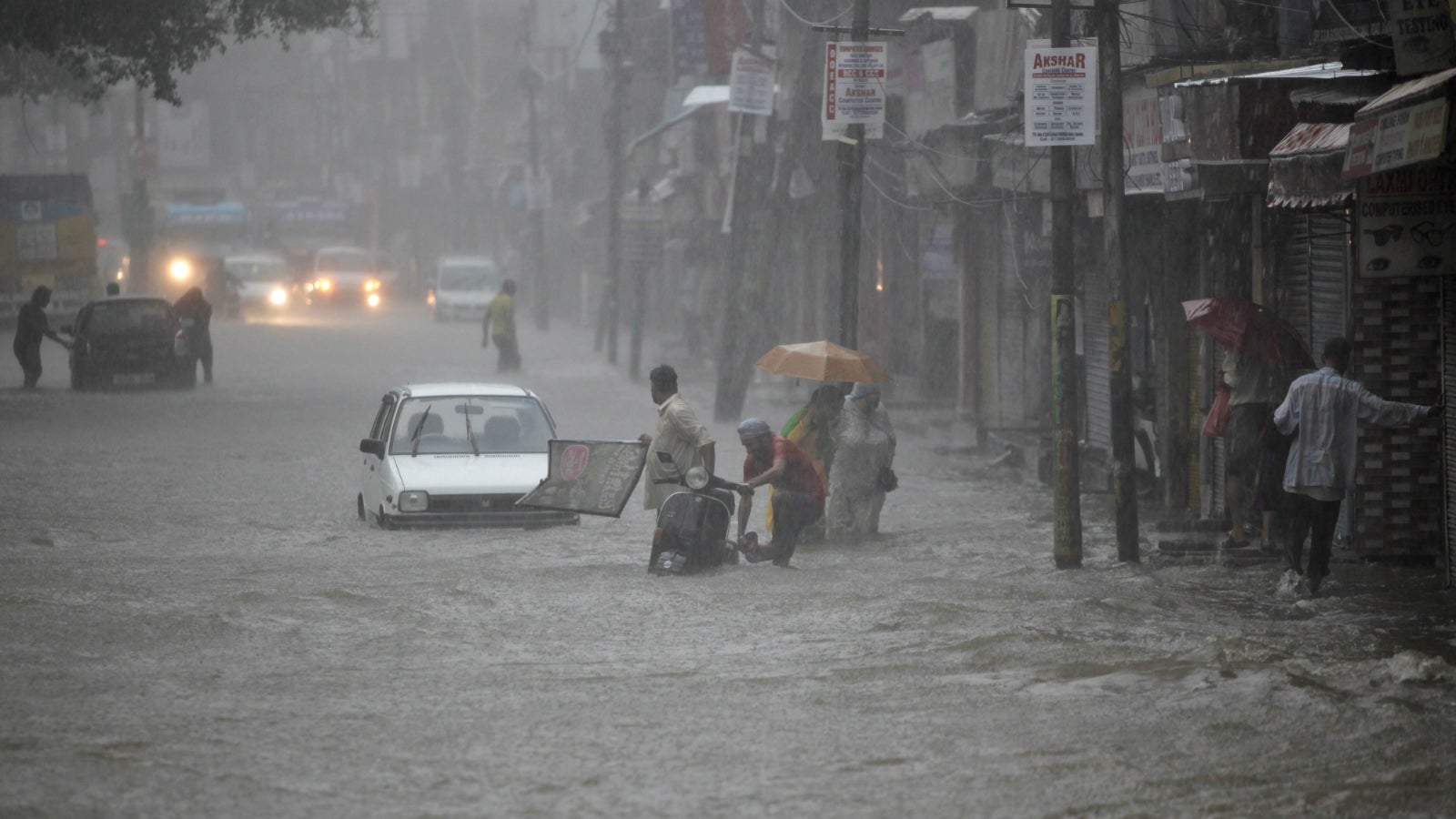Keep calm and swim on: The hellhole that is the Indian monsoon is here to stay
India’s annual water woes almost always swing between two extremes: drought and flood. After a scorching summer this year, parts of urban and rural India are now going under water.


India’s annual water woes almost always swing between two extremes: drought and flood. After a scorching summer this year, parts of urban and rural India are now going under water.
Over the last week, the monsoon rains, which account for 70% of the country’s annual rainfall, have wreaked havoc across the country, turning roads into rivers and flattening entire villages.
In the information technology hub of Bengaluru, residents took to fishing in the streets, while locals in the northern city of Gurgaon (Gurugram)—dubbed the Millennium City—left behind their vehicles, exasperated by a seven-hour traffic snarl. In the rural states of Assam and Bihar, at least 80 persons lost their lives and millions have been uprooted.
India loses a little over $7 billion to floods every year, according to a United Nations report. Yet, the country quickly moves on without addressing the fundamental causes of flooding.
Drainless urban India
India’s struggle with the rains is a direct result of its inefficient drainage systems and poor planning, particularly in the country’s overcrowded metropolises.
As an ever-growing population squeezes into cities such as Mumbai and Bengaluru, natural flood barriers like wetlands get swallowed and new buildings frequently rise over storm drains. Any unexpected excess in rainfall, thus, throws the city totally out of gear. The story’s the same in most of India’s smaller towns too.
“Every country has faced such issues, but they had the political and the collective will of the people to make a change,” Usha P. Raghupathi, a professor at the New Delhi-based National Institute of Urban Affairs, said. Quite often, she said, Indian authorities ignore a crucial aspect of planning: the hydrology of the region.
“Water never forgets its course. It has a natural drainage and that’s why roads become rivers,” Raghupathi said. “In most situations, vested interests force administrators to ignore these factors.”
Now, with India pushing for further urbanisation, experts believe even moderate rains may lead to crises. Over the next six years, India looks to make “smart cities” out of 98 of its existing city centres, which account for 35% of its urban population.
“The magnitude of the crisis will keep increasing… as the water has no infiltration points,” V. Rajamani, professor emeritus at the New Delhi-based Jawaharlal Nehru University said. Rajamani has researched the flood crises in Srinagar (2014) and in Chennai (2015) and his work has him convinced that policy is to blame.
“Human beings are changing the urban landscape like never before. In Srinagar, 80% of the river line has been occupied by humans now.”
Rural India’s multifold crisis
The situation is as bad in rural India, notably in states such as Uttarakhand, Jammu and Kashmir, and Assam, where a combination of climate change and poor policy decisions has turned deadly.
As global temperatures rise, Himalayan glaciers are melting more rapidly and rainfall patterns have been disrupted, leading to heavier rains during monsoons. In Uttarakhand, this situation has been worsened by massive hydroelectric projects that have significantly degraded the environment, besides extensive deforestation and construction along the hills.
In 2013, these dams sparked cataclysmic landslides. The year also saw one of the worst floods in the state’s history, affecting over nine million people (PDF), with hundreds killed and thousands missing.
Uttarakhand is struggling again this year with flash floods that have killed more than 30 people across the hill state in June.
The northeastern state of Assam has fared worse in 2016.
According to the Assam State Disaster Management Authority, around 1.6 million people have been displaced in 21 districts in the past few weeks as nine of the state’s rivers, including the Brahmaputra, have overflowed. As of July 31, 31 people have been killed and the state’s infrastructure has suffered extensive damage.
Assam’s wildlife has suffered, too. The Kaziranga National Park, home to the world’s largest population of one-horned rhinos, has been hit badly. The floods have so far killed 218 animals at the national park, including 17 rhinos and 166 hog deer.
“Until and unless the Indian government accepts the floods in Assam as a national problem, there isn’t much one can do,” Sanjoy Hazarika, director of the Centre for North East Studies and Policy Research at the New Delhi-based Jamia Milia Islamia university, said. “The Indian government tends to keep the data (on water volume) on the Brahmaputra a state secret. I am not really sure how much information is passed on to the state government, which can take preventive measures if needed.”
Meanwhile, the India Meteorological Department has forecast more heavy rain in the following months.
For now, it seems India will have to do with fishing in the city streets or climbing up to the village rooftops.